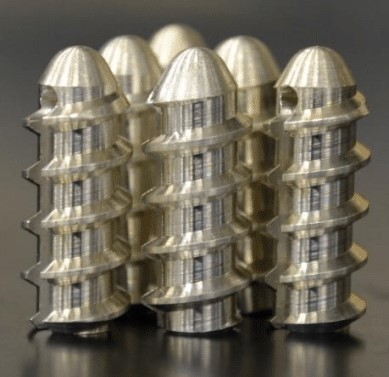 Soft tissue injuries — like rotator cuff tears or hip impingement — are fairly common, particularly among athletes and older populations. These injuries frequently require surgery where multiple suture anchors are inserted into the bone, providing a strong base through which a suture can be threaded to reattach tendons and ligaments.
Soft tissue injuries — like rotator cuff tears or hip impingement — are fairly common, particularly among athletes and older populations. These injuries frequently require surgery where multiple suture anchors are inserted into the bone, providing a strong base through which a suture can be threaded to reattach tendons and ligaments.
Much like anchors used to hang a heavy object on a wall, suture anchors need to be durable and remain fixed in place. A newly patented magnesium-based suture anchor from University of Pittsburgh Professor Savio L-Y. Woo’s laboratory, addresses the shortcomings of the metallic and polymer devices currently available on the market. Dr. Woo is a distinguished university professor emeritus of bioengineering at Pitt’s Swanson School of Engineering and a former McGowan Institute for Regenerative Medicine affiliated faculty member.
“Our design improves device performance by mitigating common failures in polymer suture anchors, including device breakage, eyelet failure, and low pullout strength,” said Dr. Woo.
Current metallic devices are non-degradable in the body and interfere with magnetic resonance imaging (MRI), while polymer devices degrade very slowly and are associated with osteolysis — the destruction of bone tissue.
“By switching to biodegradable and bioresorbable magnesium materials, the suture anchors can be replaced by newly formed bone. Magnesium is also ductile; its mechanical properties are closer to bone, making it better than other metallic materials. Ultimately, magnesium suture anchors will alleviate pain and improve the quality of life for patients who receive soft tissue repair surgery,” added Dr. Woo, who is also the founding director of Pitt’s Musculoskeletal Research Center (MSRC).
The device was developed in collaboration with Kwang Kim, PhD, and Jonquil Flowers Mau, PhD, former bioengineering graduate students in the MSRC. The work was sponsored by the National Science Foundation (NSF) – Engineering Research Center (ERC) for Revolutionizing Metallic Biomaterials grant in collaboration with North Carolina Agricultural and Technical State University (NCA&T) as well as the University of Cincinnati.
Illustration: University of Pittsburgh Swanson School of Engineering.
Read more…
University of Pittsburgh Swanson School of Engineering News Release
